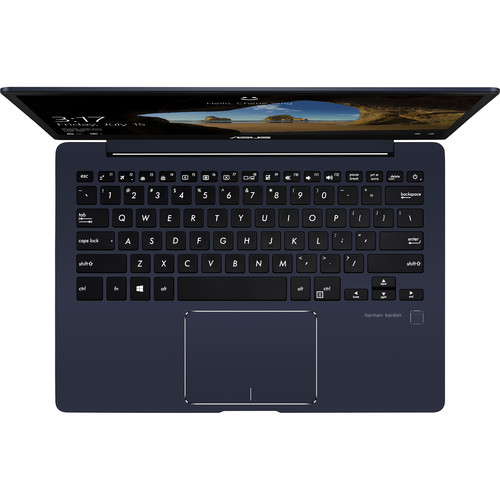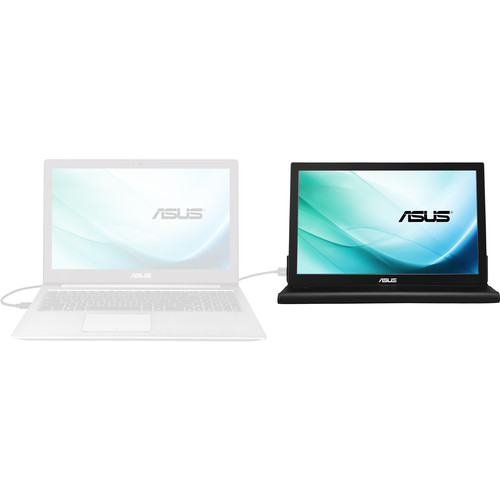Description
ASUS E403NA-US21 overview
Stay productive while on the go with the ASUS 14″ E403NA-US21 VivoBook. The E403NA VivoBook features a 14″ display with a Full HD 1920 x 1080 screen resolution, powered by integrated Intel HD Graphics 505. The display also has a matte finish to help reduce screen glare.
The system is powered by a 1.1 GHz Intel Pentium N4200 quad-core processor. It also has 4GB of DDR3 onboard RAM, 128GB of eMMC flash storage, an SD card slot, 802.11ac Wi-Fi, Bluetooth 4.1, USB 3.0 Type-C, USB 3.0 Type-A, USB 2.0 Type-A, HDMI, stereo speakers, an integrated microphone, an a 3.5mm headphone/mic combo jack. Windows 10 Home (64-bit) is the installed operating system.
ASUS E403NA-US21 VivoBook
Quad-Core Intel Pentium Performance
The VivoBook houses an Intel Pentium N4200 processor. Its quad cores can reach a stock speed of 1.1 GHz. It can also be overclocked up to 2.5 GHz.
14″ Full HD Matte Display
The 14″ display on the VivoBook features a Full HD 1920 x 1080 screen resolution and a 16:9 aspect ratio. It also has a matte finish to reduce screen glare.
802.11ac Dual-Band Wi-Fi & Bluetooth 4.1
Get Internet connectivity with 802.11ac dual-band Wi-Fi, which enables you to connect to the 5 GHz band for faster speeds compared to the 2.4 GHz band. You’ll also be able to pair compatible wireless peripherals to this system with Bluetooth 4.1 technology.
USB Type-C
The VivoBook features a USB Type-C port, which allows you to connect to a compatible USB Type-C device. The USB Type-C connector is unique because it features a reversible design.
Thin, Portable Design
Weighing 3.3 pounds and measuring just 0.7″ thin, the VivoBook features a portable design that you can take with you on the road.
Windows 10 Home
Start Menu
After its hiatus in Windows 8, the Start Menu has returned. Utilizing a combination of the traditional menu system and Windows 8’s Live Tiles, the improved Start Menu gives you more information at a glance, showing notification information alongside your applications and other pinned items.
Cortana
Microsoft’s digital personal assistant, Cortana can answer your questions with information gleaned from both your device and the internet at large. You can type or even talk with her, if your system has a microphone. Using her Notebook, Cortana keeps track of your needs and wants, and she learns over time to improve her information gathering skills.
Microsoft Edge
After nearly 20 years, Microsoft has finally replaced its Internet Explorer web browser. With Microsoft Edge, users can write directly on web pages and share notes with friends and colleagues. It also improves the online reading experience by adding a distraction-free mode and read-it-later functionality. Edge also has built-in Cortana integration; you can have her help you find a restaurant, make a reservation, and pull up directions without leaving your browser.
Windows Store
For Windows 10, Microsoft has unified the Windows Store. Now, apps for PCs, tablets, and phones will all be accessible from one place. And with support for Universal Apps, one version of an app can work across all your compatible devices automatically.
Windows Continuum
Windows 10 was designed for a variety of screen sizes and input styles, and with its Continuum feature, it automatically adapts to fit your needs. A Windows 10 tablet on its own requires a touch-centric approach, but attaching a mouse and keyboard will shift everything to a more traditional interface. You can even attach an external monitor to your Windows 10 phone for a near-desktop experience. But it’s not just the operating system; Windows Universal Apps take advantage of Continuum as well.
Xbox on Windows 10
Gaming is a big focus of Windows 10. Xbox integration allows for PC players to match up against Xbox One players on supported games, and if you have an Xbox One, you can even stream compatible titles to your PC. Native support for recording with the new Game DVR feature makes it easy to capture and share your gameplay. The new DirectX12 takes better advantage of multi-core processors, giving games a performance boost, even on older hardware. Windows 10 also features native support for virtual reality headsets, such as the Oculus Rift.







































